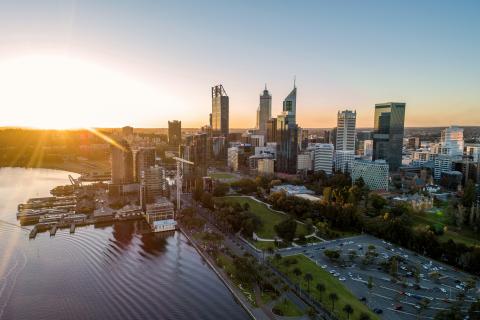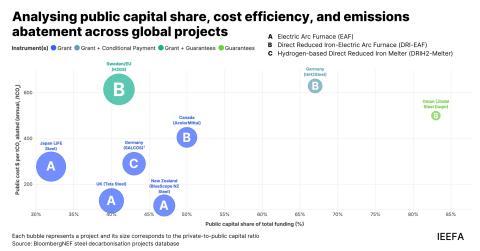Submission: Inquiry into nuclear power generation in Australia
Download Full Version

7 November 2024
To: House Select Committee on Nuclear Energy
Re: Inquiry into nuclear power generation in Australia
Thank you for the opportunity for the Institute for Energy Economics and Financial Analysis (IEEFA) to provide input to the House Select Committee on Nuclear Energy as part of its inquiry into nuclear power generation in Australia.
IEEFA is an independent energy finance think tank that examines issues related to energy markets, trends and policies. The Institute’s mission is to accelerate the transition to a diverse, sustainable and profitable energy economy.
Over the past few years, IEEFA has produced extensive research on nuclear power generation, tracking the status and costs of nuclear reactor projects.
- In 2017, we analysed nuclear power in the US and Europe in our research brief A Half-Built, High-Priced Nuclear White Elephant. We found that all recent nuclear projects in the US and Europe had suffered construction delays and massive cost overruns, which caused extreme financial distress to the technology vendors.
- In our January 2022 report, Southern Company’s Troubled Vogtle Nuclear Project, we found that the Vogtle nuclear plant in Georgia experienced significant cost overruns and schedule delays.
- In 2022, we found that the proposed NuScale small modular reactor (SMR) had increased in cost in our analysis, Small Modular Reactor update: The fading promise of low-cost power from UAMPS’ SMR. We concluded that further cost increases were likely. Subsequently, the estimated construction cost for the project increased by 75%, which we reported on in our update Eye-popping new cost estimates released for NuScale small modular reactor.
- In our February 2023 report, European Pressurized Reactors (EPRs): Next-generation design suffers from old problems, we found that the five EPRs designed by French utility EDF had all suffered unanticipated issues that led to costly delays and soaring price tags.
- In our May 2024 report, Small Modular Reactors: Still too expensive, too slow and too risky, we found that SMRs are too expensive, too slow to build and too risky to play a significant role in transitioning from fossil fuels in the next 10-15 years.
In recent months, we have published several pieces of analysis focusing on the proposal to adopt nuclear energy in Australia.
- In September 2024, we analysed the impact on household energy bills if nuclear power generation were introduced into Australia’s energy system in our report, Nuclear in Australia would increase household power bills. The Executive Summary of the report is included in this submission. IEEFA’s key findings were:
- In each of the six scenarios we analysed based on relevant international examples of nuclear power construction projects, bills increased by hundreds of dollars.
- Household electricity bills could rise by A$665/year on average under the Federal Opposition’s plans to introduce nuclear Australia’s energy mix.
- For households that use more electricity, bills could rise more – by A$972/year on average for a four-person household across nuclear scenarios and regions.
- The cost of electricity generated from nuclear plants would likely be 1.5 to 3.8 times the current cost of electricity generation in eastern Australia.
- Following the report’s publication, IEEFA released a commentary, Nuclear proposal will increase power bills, in which we examined a speech by Federal Opposition Leader Peter Dutton to the Committee for Economic Development of Australia (CEDA) on the Coalition’s nuclear plans. The speech provided no information on the costing of the proposed nuclear reactors, and did not address how Australia could avoid the extremely high construction costs of recent nuclear reactor projects in Europe and North America.
- On 8 October, IEEFA released a Response to the Federal Opposition on how nuclear will increase power bills, addressing criticism of our research in further detail. Opposition spokesman for Climate Change and Energy Ted O’Brien claimed we had “cherry-picked” overseas examples of nuclear reactor construction projects with the worst outcomes. This was not the case. We examined every nuclear reactor commencing construction in the past 20 years in economies comparable to Australia (with similar labour market conditions and form of government), with technology that would be considered safe by Australian allies, with a similar size nuclear build program, for which the costs were transparent. Other examples are not relevant to the Australian context.
- Finally, on 9 October, IEEFA published We can’t afford to fall back on gas to fill nuclear gap, which assessed Coalition statements that gas would play a key role while its proposed nuclear plants were built. IEEFA noted that gas is one of the most expensive forms of electricity generation, its role in the National Electricity Market (NEM) is in decline and its use as a stopgap measure would likely result in increasing energy costs.
We would welcome the opportunity to discuss any matters raised in our submission further.
Kind regards,
Johanna Bowyer, Lead Analyst, Australian Electricity, IEEFA
Tristan Edis, Guest Contributor, Australian Electricity, IEEFA















